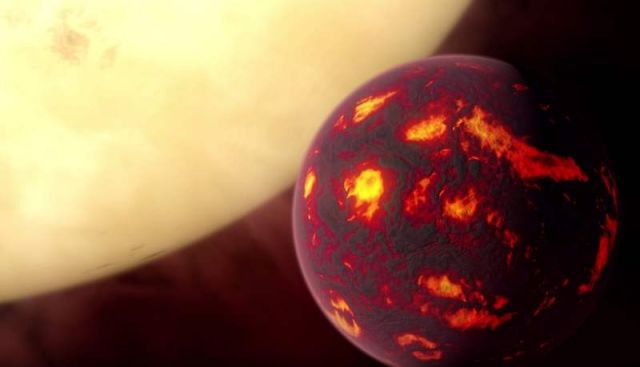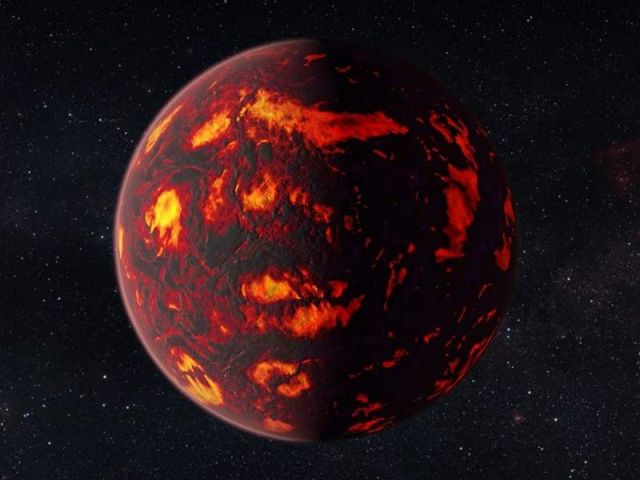For the first time astronomers were able to analyse the atmosphere of an exoplanet, in the class known as super-Earths.
Using data gathered with the NASA/ESA Hubble Space Telescope and new analysis techniques, the exoplanet 55 Cancri e is revealed to have a dry atmosphere without any indications of water vapour. The results, to be published in the Astrophysical Journal, indicate that the atmosphere consists mainly of hydrogen and helium.
The above video shows an artist’s impression of the super-Earth 55 Cancri e moving in front of its parent star. During these transits astronomers were able to gather information about the atmosphere of the exoplanet. The Scientists were able to retrieve the spectrum of 55 Cancri e embedded in the light of its parent star.
The analysis showed that the atmosphere of 55 Cancri e consists mainly of helium and hydrogen with hints of hydrogen cyanide.
“This is a very exciting result because it’s the first time that we have been able to find the spectral fingerprints that show the gases present in the atmosphere of a super-Earth,” explains Angelos Tsiaras, a PhD student at UCL, who developed the analysis technique along with his colleagues Ingo Waldmann and Marco Rocchetto. “The observations of 55 Cancri e’s atmosphere suggest that the planet has managed to cling on to a significant amount of hydrogen and helium from the nebula from which it originally formed.”
Super-Earths like 55 Cancri e are thought to be the most common type of planet in our galaxy. They acquired the name ‘super-Earth’ because they have a mass larger than that of the Earth but are still much smaller than the gas giants in the Solar System. The WFC3 instrument on Hubble has already been used to probe the atmospheres of two other super-Earths, but no spectral features were found in those previous studies.
More information at spacetelescope







Leave A Comment